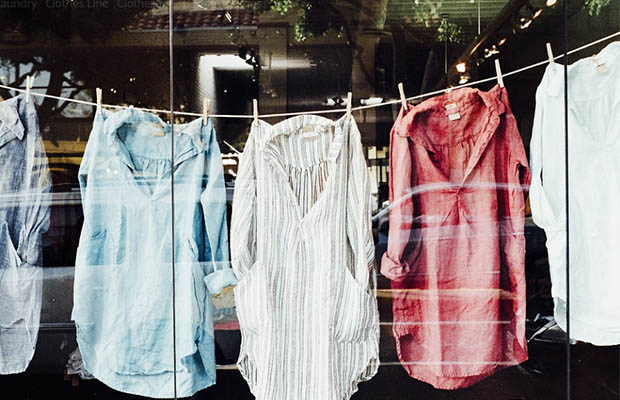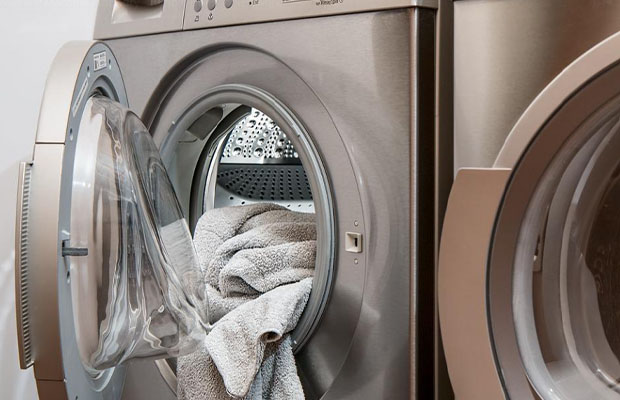It might be your fault if your clothes consistently have issues after passing through the laundry room. Your dirty laundry may not be sorted properly.
Many people simply throw everything in the washer without sorting it because they find the process mysterious. Learn how to sort and separate your clothes for laundry properly to set yourself up for success. In addition to helping with cleaning, preserving colors, cutting down on drying time, and reducing the spread of lint and fuzz, sorting properly also helps to prevent accidents.
Actually, it’s not that difficult. If you follow these four easy steps, you’ll be doing laundry in no time.
Table of Contents
Items Needed For Laundry Sorting
- Laundry baskets
- Mesh laundry bags for delicates (optional)
- Pre-treatment
- Detergent and other laundry materials
Steps To Separate And Sort Laundry
You can wait until there is a mountain of laundry because sorting will be laborious. Or, you can make it simple by sorting laundry as you take off clothes or use each item because you know there will be dirty clothes and linens that need to be cleaned every day.

1. Read The Label
You probably won’t need to complete this step every time if you are very familiar with your regular laundry. It’s a crucial step, though, if you’re teaching a kid how to do laundry. Examine the care instructions on each item in the hamper.
The label will specify whether an item can be machine washed, the water temperature to use, and how to dry the fabric. Organize all garments with the labels “wash separately” or “hand wash” into a separate pile.
If you are learning how to do laundry and come across a tag that reads “dry clean only,” trust the label and put the item in a bag to take to a professional dry cleaner. You’ll eventually discover that some items marked “dry clean only” can actually be hand washed. A DIY home dry cleaning kit will also be demonstrated for use in the dryer.
2. Sort By Color
Most people are aware that when sorting laundry, whites and darks should first be separated. Some experts, however, advise that you group your clothing by shade to go even further. Gather a collection of clothes to begin:
Whites – no patterns or embroidery.
Lights – Whites with embroidery or prints, light yellow tones, and other similar light tones.
Brights – any vivid hues, such as red, green, light blue, orange, and bright yellow. Tips on how to wash colored clothing are provided in this guide.
Darks – Purples, blues, and other dark colors might be separated from fabric that is brown or black. This might prevent the dye from brown or black from darkening other hues. Do you need any additional advice on how to keep your dark clothing dark?
3. Sort By Different Fabric Type
You should know how to separate laundry by fabric type in addition to color sorting. This may seem like an extra step, but it actually contributes significantly to the longevity of your clothing.
The entire wash cycle, when clothes are being washed, they come into constant contact with one another. Heavier fabrics are more abrasive, which can wear down delicate clothing too quickly and cause tearing or other damage.
Check labels carefully before tossing anything into the washer; put anything marked “hand wash” or “dry clean only” aside. After that, divide the clothing into delicates, daily-wear fabrics, and heavy-duty fabrics (like denim). Remove everything from your pockets and fasten all fasteners (zippers, buttons, hooks, etc.) to further protect your clothing.) and turn knits or clothes with embellishments inside out. Additionally, you can wash delicate items in a bag.
Examples of various fabric groups are provided below:
Sheets and bedding
The best way to wash comforters is separately from sheets in a large-capacity washer. For specific instructions on how to care for your sheets and other bedding, check the care label, but generally speaking, depending on the material of the sheets, you should use the warmest water setting.
Towels
To avoid color fading or transfer, it is best to wash white or light towels separately from towels that are brighter in color. In general, towels should be washed in hot water.
Dark jeans
In order to prevent shrinkage, it is best to wash lightly soiled jeans inside out on a delicate or gentle cycle on their own. Cold water should also be used. Keep it to the clothing of similar colors if you must wash other items.
4. Wash Heavily Soiled Items Separately
Not everyone will require this step, but sort as usual, but wash the heavily soiled items in separate loads if they have embedded dirt or oily stains like motor oil or numerous cooking oil stains. This will stop heavy soil from being redeposited on additional clothing. Strong smells won’t be able to spread to other fabrics either.
The Bottom Line
There is no need to stress about getting stubborn stains out of colored loads prior to washing. To increase the effectiveness of your detergent, pre-treat stubborn stains.
Sorting your laundry, even though few people do it, is essential if you want to keep your clothes looking fresh and bright. You can extend the life of your clothing so you can continue wearing it for a long time by organizing it according to the recommended cycle, water temperature, fabric type, color, and level of the soil.
Read Next: How To Style Bookcase?
